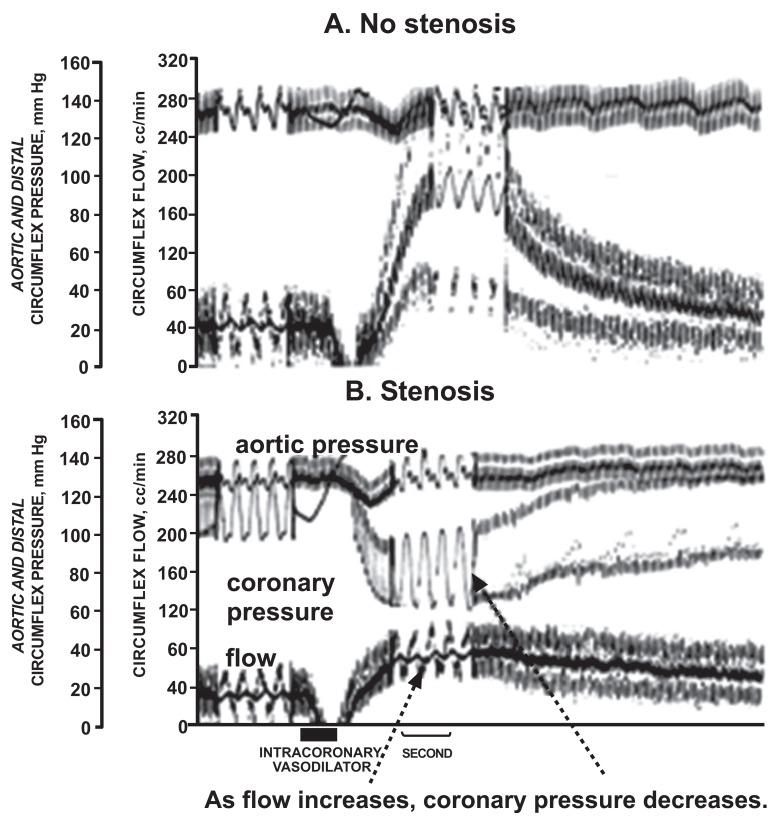Fig. (2).
Tracings demonstrating fractional flow reserve (FFR) as a measure of coronary flow reserve. Shown are coronary blood flow and aortic and coronary pressure tracings from a dog without a coronary stenosis (A) and a severe stenosis (B). A hyperemic response was induced by the coronary vasodilating effect of a contrast injection, indicated by the bar at the bottom of the figure. Without a stenosis (A), the contrast caused a marked increase in coronary blood flow, with little divergence of pressures. However, with a stenosis (B), the contrast increased coronary blood flow modestly with a marked increase in the the aortic-distal coronary pressure gradient. FFR is the ratio of coronary to aortic pressure at maximum hyperemia and reflects the flow reserve [23].

